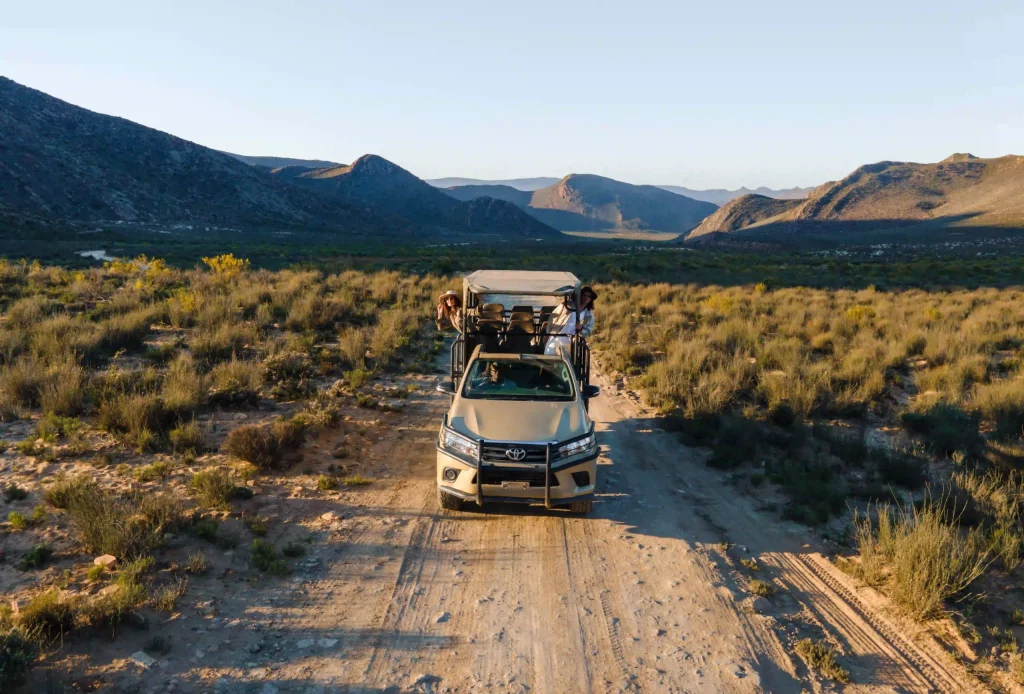Snow in Cape Town goes Viral: Daily Mail Shares Video of South Africa Safari in the Snow

This week, audiences all over the world were amazed as a video of safari animals in the snow in Cape Town, South Africa, went viral on TikTok. The Daily Mail, who shared the TikTok video of the incredibly rare moment snow fell on safari in South Africa, went viral in less than 24 hours. Posted […]
What is the Best Age to Take Your Child on Safari?

For many families wanting to visit South Africa or go on a wildlife adventure, the question “what is the best age to take your child on safari?” often comes up. Taking your children on safari should be one of the most wonderful things your family will ever do, on so many levels. But we understand […]
Thinking of a Family Holiday? Here’s Why You Should Take Your Children On Safari with You

Taking your children on safari is an amazing opportunity that promises an exciting adventure for the whole family. But a safari isn’t just an epic journey into South Africa’s untamed wilderness, it’s a chance to share our country’s diverse wildlife, natural scenery and rich cultural heritage with your children. Imagine the joy on you’re child’s […]
Snow Falls at Aquila Private Game Reserve as Cold Front Sweeps over the Western Cape

Safari guests at Aquila Private Game Reserve were treated to a rare and spectacular sight this morning (08 July 2024) when a cold front swept through the Western Cape’s Ceres region, bringing unexpected snowfall just 2 hours from Cape Town. This extraordinary sight provided a magical experience for overnight safari visitors and highlighted the unpredictable […]
South African Safari Terms You Need To Know

Derived from the Swahili word for ‘journey’, the term “safari” refers to an adventure or expedition into the African wilderness, where you’ll have the opportunity to encounter and experience wildlife and untamed nature safely and respectfully. Going on a South African safari is an incredible adventure, and there’s some fun language and and local lingo you […]
Why are the Big Five animals on South Africa’s Banknotes — Lion, Leopard, Rhino, Buffalo and Elephant?

For many tourists and travellers, South Africa’s banknotes are a colourful and beautiful surprise when visiting the country for the first time. And, in 2023, the South African Reserve Bank released new banknotes and coins, showcasing the country’s ‘family bonds’ and ‘deep ecology’. Although some design changes were made (with the big five getting a […]
Halal Travel, Tourism and Safari Tours in Cape Town, South Africa

Cape Town’s breathtaking landscapes, vibrant culture, and rich history make the city a favourite destination for travellers from all around the world — and the city is fast becoming a premier destination for Halal travel and tourism and continues to enhance its appeal and inclusivity. Whether you’re embarking on a safari adventure, savouring Halal cuisine, […]
Save up to 50%! Kids Pay Half Price at Aquila Safaris

With Youth Day around the corner (June 16) and School Holidays imminent (June 14 – July 9), Aquila Private Game Reserve offers a fun and affordable Cape Town winter holiday and day trip safari destination for the whole family. And, with Aquila’s unbeatable Winter Deals and exclusive children’s rates, you can save up to 50% […]
Amazing Photos of the Southern Lights (Aurora Australis) Over Aquila Private Game Reserve

In the early hours of the morning, Aquila was illuminated by the otherworldly glow of the Southern Lights (Aurora Australis), setting the sky ablaze with a mesmerising display of light and colour over the reserve. This extraordinary display was ignited by a historic G5 solar storm, which collided with Earth’s magnetic field on the night […]
Best Cape Town Safari: Big 5 Game Reserve close to Cape Town, South Africa

Cape Town is an amazing travel destination for anyone seeking the ultimate city escape, beach holiday or African safari adventure. From the local sights at the V&A Waterfront, stunning coastlines, incredible views from Table Mountain and penguins at Boulders Beach, to the internationally renowned Cape Winelands, fine-dining restaurants and eclectic art scene, the Mother City […]

